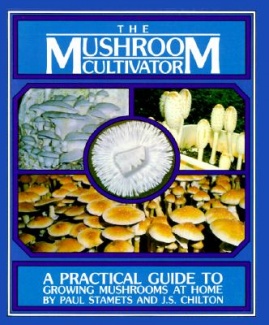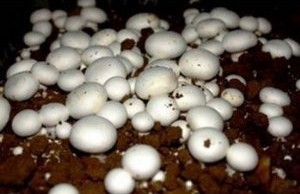Growing mushrooms in the home garden is not a new phenomenon – in fact, the Chinese have cultivated home grown mushrooms for more than 1,000 years. There are over 14,000 species of mushrooms but only 250 of them are edible. The exceptional flavour that fungi adds to meals can come with a hefty price tag at the grocery store, so learning how to grow mushrooms is not only cost-saving and rewarding, but can provide a challenge if you are looking to further your gardening and culinary skills. Additionally, mushrooms are surprisingly high in protein, potassium, B vitamins and selenium.
If you are an impatient gardener, be prepared to learn the art of “slow.” Mushrooms only fruit when they are truly ready. Paul Stamets, founder of Fungi Perfecti, believes that fungi take a very long-term view of their habitat and that they are community-based, which means fruiting is intended to serve both the fungus and the ecological system it calls home. “They are tremendous allies,” Stamets says, “for the health of people and the planet.”

Where to Begin
The surest and simplest way to grow mushrooms at home is from a mushroom kit purchased from a reputable source. Kits allow you to grow multiple or specific varieties with surprising ease. They come with all of the supplies and complete instructions.
Because kits are inclusive of most materials, the remainder of the article refers to growing mushrooms without a kit for those excited to get growing without one.
While it is possible to tackle the entire mushroom growing experience by yourself, it is advisable that until you become familiar with how to grow mushrooms, you purchase the compost and spawn from a supplier and go from there. The process of making compost suitable for mushrooms can be relatively complex. The compost must be controlled with proper temperature, oxygen and humidity to ensure that pasteurisation occurs to ward off pests and disease. Additionally, spawn production is a scientific process often performed by experts. The spores are collected in a sterile environment and when inoculated, they produce spawn, which is the equivalent to a seed.
Dark and Humid is Best
Mushrooms require a constant temperature, humid conditions and little to no sunlight – a closet or laundry can be great locations to grow fungi indoors. Take care not to place the mushrooms next to a heat source – dry soil creates an uninhabitable mushroom environment. If you prefer to start your mushroom patch outside, under a barbeque or porch, in the garage, or amongst a shady section of garden can be ideal spots.
Mushroom Mediums
 If you have a kit, the best medium to grow your specific type of mushroom is usually provided or at least alluded to in the instructions.
If you have a kit, the best medium to grow your specific type of mushroom is usually provided or at least alluded to in the instructions.
Different varieties of mushroom grow on different mediums. For instance, shiitake mushrooms grow best on wood while Pearl Oysters grow best in wheat straw. The common button mushroom grows in trays, bags, boxes, or raised beds filled with compost.
How to Grow
Because growing mushrooms is dependent on the variety, the following will cover the popular button mushroom that we are all so familiar with.
Mushrooms lack chlorophyll; therefore, all of their nutrients must be obtained from the medium in which they grow. A nutrient-rich compost of organic matter provides an ideal medium for spawn to take hold and give birth to mycelium, the lacy, white root structure of the mushroom. To encourage mycelium growth, thoroughly work the spawn through the compost, sufficiently aerating it as you go. Keep the compost moist by misting it daily with a spray bottle.
Once the mycelium is visible, cover the compost with a layer of pasteurised peat moss to help hold in moisture and create an ideal condition to encourage fruiting bodies – the edible part of the mushroom. This is called ‘casing.’ Continue misting the moss to keep it damp. Be careful not to overwater, as this will encourage mould to grow instead of mushrooms. Between 17 and 25 days after the peat moss is laid down, tiny white protrusions will ascend from the mycelium through the moss to become the mushroom caps. Size is no indication as to the maturity of the mushrooms as ripe ones vary from small buttons to large caps.
Pests and Diseases
Mushrooms are extremely susceptible to pests and diseases. Ensuring that the compost is sterile and that the spores come from a reliable source will help mitigate the chances of contracting pests or diseases. If mushrooms are grown outdoors, slugs will probably be the pests that you will have to contend with. A few moonlit walks through your mushroom patch to remove them may be necessary.
Enjoying Your Fungi
 Mushrooms can be harvested at three different stages – buttons, cups or flats. Button mushrooms are unopened, cups have an open veil and a rounded cap and flats have exposed gills and a flattened cap.
Mushrooms can be harvested at three different stages – buttons, cups or flats. Button mushrooms are unopened, cups have an open veil and a rounded cap and flats have exposed gills and a flattened cap.
Pick each mushroom with an upward, twisting motion. After picking, there should be as few holes or mushroom stumps left behind as possible. Brush the mushrooms to remove the compost and casing materials.
Mushrooms will fruit in flushes every 1-3 weeks and will continue to produce for one to six months depending on the variety.
Recycle Your Compost
When the mushrooms finish producing, use the compost to grow vegetables! The compost makes an excellent nutrient-dense, well-drained and weed-free media to grow other crops. Mushroom compost can be very alkaline, which can adversely affect some plants. The compost will not be harmful if used in small amounts, but if you are intending to use large amounts, invest in a simple pH testing kit or only grow alkaline-loving plants in that area.
Whilst there are menageries of mushrooms that can be grown by the home gardener, each variety has specific growing preferences; therefore, it is best to research the mushroom variety you wish to grow before getting started. Popular varieties include oysters (Pleurotus species), shiitake (Lentinula edodes) and various button mushrooms (Agaricus bisporus). The culinary delights that fresh, homegrown mushrooms bring to the table are well worth the effort. Furthermore, growing mushrooms is a great educational experience for children and can make great tabletop winter projects!



I had no idea how easy it was to grow mushrooms until I bought a little mushroom kit for my daughter to plant for fun. So if a child can do it, anyone can!
“Mushroom” describes a variety of gilled fungi, with or without stems, and the term is used even more generally, to describe both the fleshy fruiting bodies of some Ascomycota and the woody or leathery fruiting bodies of some Basidiomycota, depending upon the context of the word.:-“^